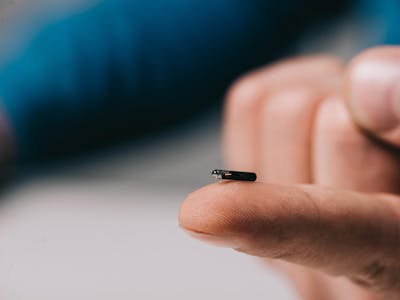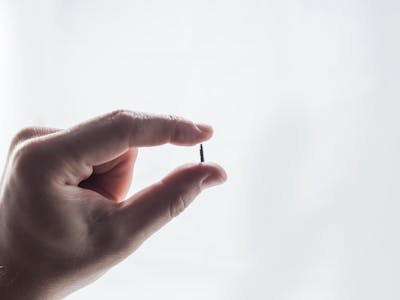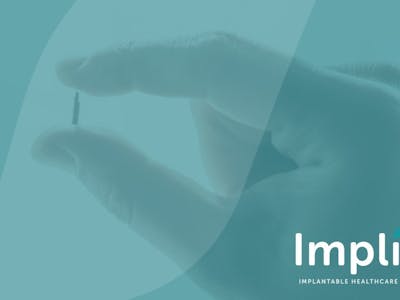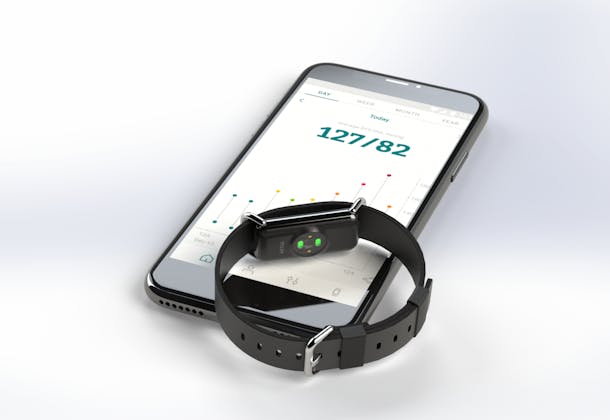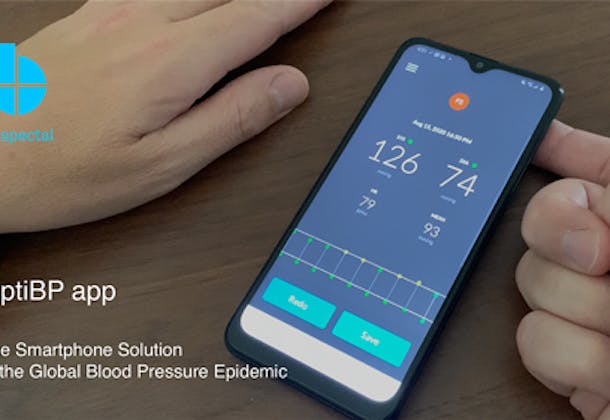CSEM develops a pioneering implant to support reproductive medicine
Swiss-based start-ups Impli and Yalosys, along with the technology innovation center CSEM, announce a significant milestone in women’s healthcare—CERES. This implantable biosensor for real-time fertility hormone monitoring is now set to undergo a transformation that will make it ready for human trials by 2025. With Impli’s expertise, the biosensor has matured from a concept to a tangible solution that currently tracks fertility hormones in real-time. CSEM’s and Yalosys will now provide the technological development to refine and enhance the biosensor’s capabilities.

Highlights
1.
Impli, Yalosys, and CSEM unite to advance an implantable biosensor, CERES, for real-time fertility hormone monitoring.
2.
Amidst increasing infertility rates and the high costs of in vitro fertilization (IVF) treatments, CERES emerges as a more accessible solution.
3.
Engineered to offer a safer and more efficient method for managing fertility, CERES is a 21-months endeavor backed by Innosuisse set to develop a state-of-the-art medical device.
Since the birth of the first in vitro fertilization baby in 1978, over 9 million babies have been born using versions of Assisted Reproductive Technology (ART) like IVF. However, the journey to a successful pregnancy can be arduous, often requiring multiple (8+) cycles over several months. Currently one in six couples are facing difficulties conceiving. Women aged 20-44 are particularly affected, with 8-12% experiencing fertility problems. As infertility rates climb and in front of expensive and invasive IVF treatments, CERES emerges as a more accessible solution.
A game-changer in the field of real-time hormone monitoring
In the high-stakes realm of patient care, timely intervention is paramount. Clinicians are on a constant vigil, meticulously tracking the optimal moment to act. For women undergoing AMT this translates to frequent clinical visits—up to two to three times weekly—for vital blood tests. These tests, while crucial, offer but a snapshot of a patient’s condition, a fleeting glimpse that may not fully capture the evolving medical narrative. The current alternatives—hormone monitoring through urine, saliva, and sweat—fall short in precision and immediacy, rendering them unsuitable for real-time clinical decision-making, and consequently they remain on edges of clinical practice. At this stage, there are no other monitors on the market that can capture data to the specificity and selectivity of the three hormones required for IVF. A richer, more comprehensive data stream could revolutionize the way clinicians determine both the timing and dosage for interventions, potentially transforming patient outcomes.
Impli is breaking the mold with CERES. The device taps into the subcutaneous (SC) interstitial fluid (ISF) for 30 days leveraging electrochemical sensing technology to deliver real-time hormone levels. “It’s a quantum leap from the invasive nature of blood sampling,” asserts Anna Luisa Schaffgotsch, Impli’s founder and CEO. “CERES offers a data stream with a resolution previously not capturable and remains unfazed by variances that can skew blood or urine-based readings. Moreover, being implantable, user error is minimized, while patient convenience is maximized. It’s a game-changer for hormone measurement accuracy.”
The first prototype devices have been manufactured by the consortium formed by Impli with Yalosys. Bench tests have been positively performed. Luigi Calabrese, co-founder and CEO of Yalosys, explains: “We aim to advance the current development by miniaturizing the devices for the application in human studies. This will reduce the invasiveness and enable us to reach ISO compatible manufacturing steps.”
CSEM’s mastery in miniaturization and life sciences: Elevating CERES
The collaboration between Impli, Yalosys, and CSEM is dedicated to perfecting CERES. This precision device showcases CSEM’s miniaturization prowess—a feat achieved through a blend of chemistry, surface engineering, and microprinting expertise. More specifically, CSEM’s contribution is threefold: first, the technology innovation center screens, evaluates and compares different types of biosensing technologies for the detection of hormones; second, CSEM will set up a benchtop to mimic the human environment for the in vitro testing; and last, the Tools for Life Sciences team will optimize and transfer the process.
Samantha Paoletti, Head of R&BD of Life Science Technologies at CSEM, emphasizes the collective expertise: “Our partnership is on track to deliver outstanding advancements within a 21-month initiative funded by Innosuisse. We are committed to meticulously enhancing CERES, elevating it to a sophisticated medical device. By integrating the latest technological innovations, we aim to achieve superior patient care and outcomes. This endeavor is a testament to the powerful synergy of CSEM’s scientific rigor and the dynamic innovation of start-ups, poised to transform the landscape of reproductive health.”
Broadening patient care
The true potential of this hormone monitoring device goes beyond the IVF market. As a regulated endocrinological device, it holds the promise of assisting various patient groups. This includes individuals living with Polycystic Ovary Syndrome (PCOS), those navigating natural pregnancy and conception, as well as those affected by miscarriage or transitioning through menopause.
Additional information
CSEM
Samantha Paoletti
Head R&BD, Life Science Technologies
T. +41 81 307 81 60
samantha.paoletti@csem.ch
Impli Limited
Anna Luisa Schaffgotsch
Founder & CEO
T +44 77 433 479 08
info@impli.org
Yalosys
Luigi Calabrese
Co-Founder & CEO
T +41 76 284 60 36
luigi.calabrese@yalosys.com
CSEM Media Relations
Sabina Müller
Media Relations
T. +41 79 361 50 12
media@csem.ch
About Impli Limited
Impli is a biotech company founded in April 2019 to make people’s lives safer and healthier using implantable technology. Impli’s vision and strategy are pivoted to the future of implantables, through the development of a range of innovative products to enable real-time, hassle-free access to your health condition data from the tip of your smartphone. The first of these products is a new generation implantable in the fertility space to better monitor the female going through IVF and hopefully reduce the number of cycles needed for a successful pregnancy. It has already been featured in the Octopus Ventures Future of Fertility Report.
About Yalosys
Yalosys AG is a privately owned Swiss SME focused on providing laser micro processing solutions for “IN GLASS” product manufacturing: from the single glass component to the fully packaged microsystem. We provide laser micromachining services for small to mid-volume productions, contract service manufacturing for the development of new “IN GLASS” products as well as engineering & consultancy services to support our customers in the development of new projects, compliant with the regulations and best practices (GMP, ISO 13485) of the MedTech sector.
